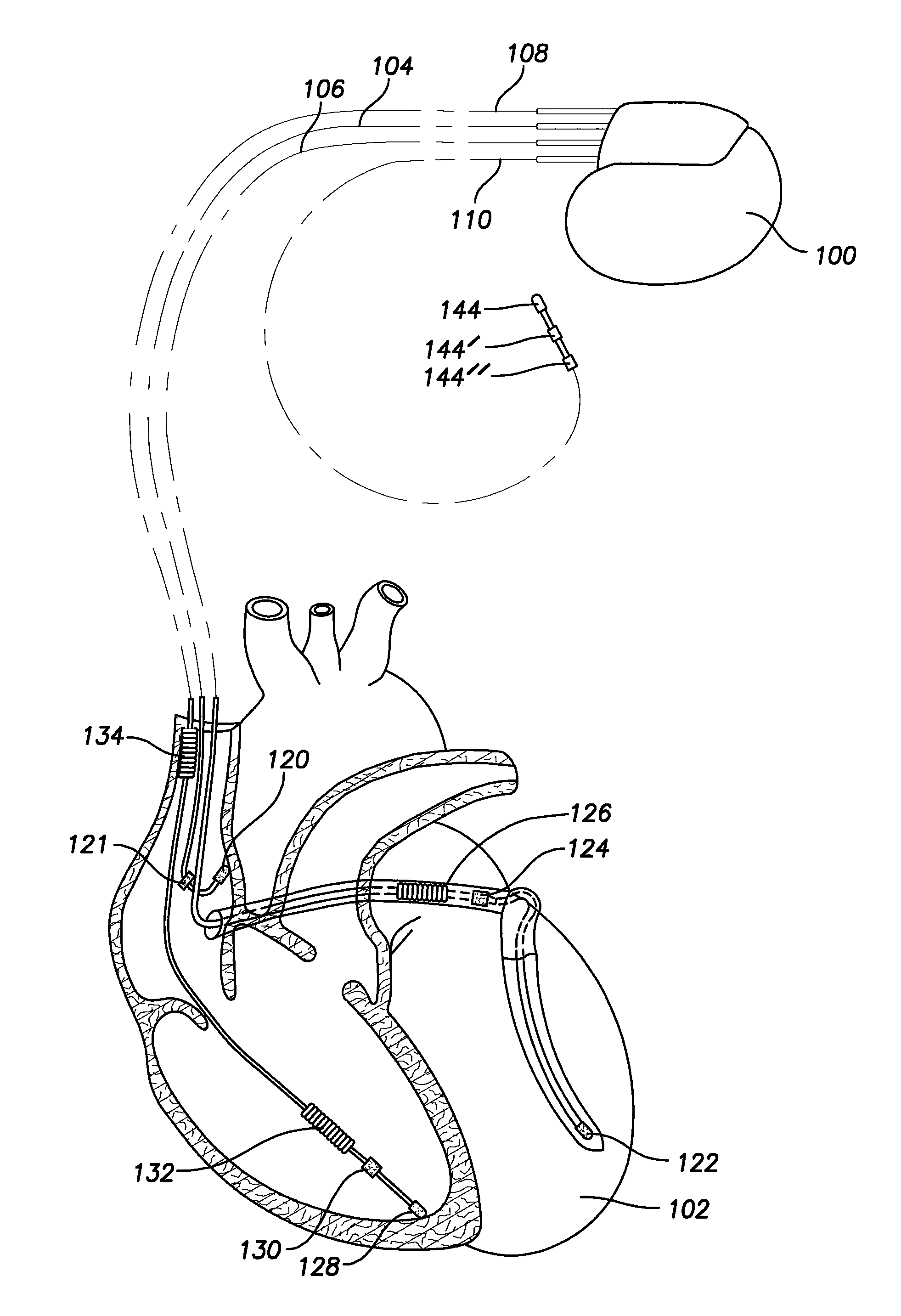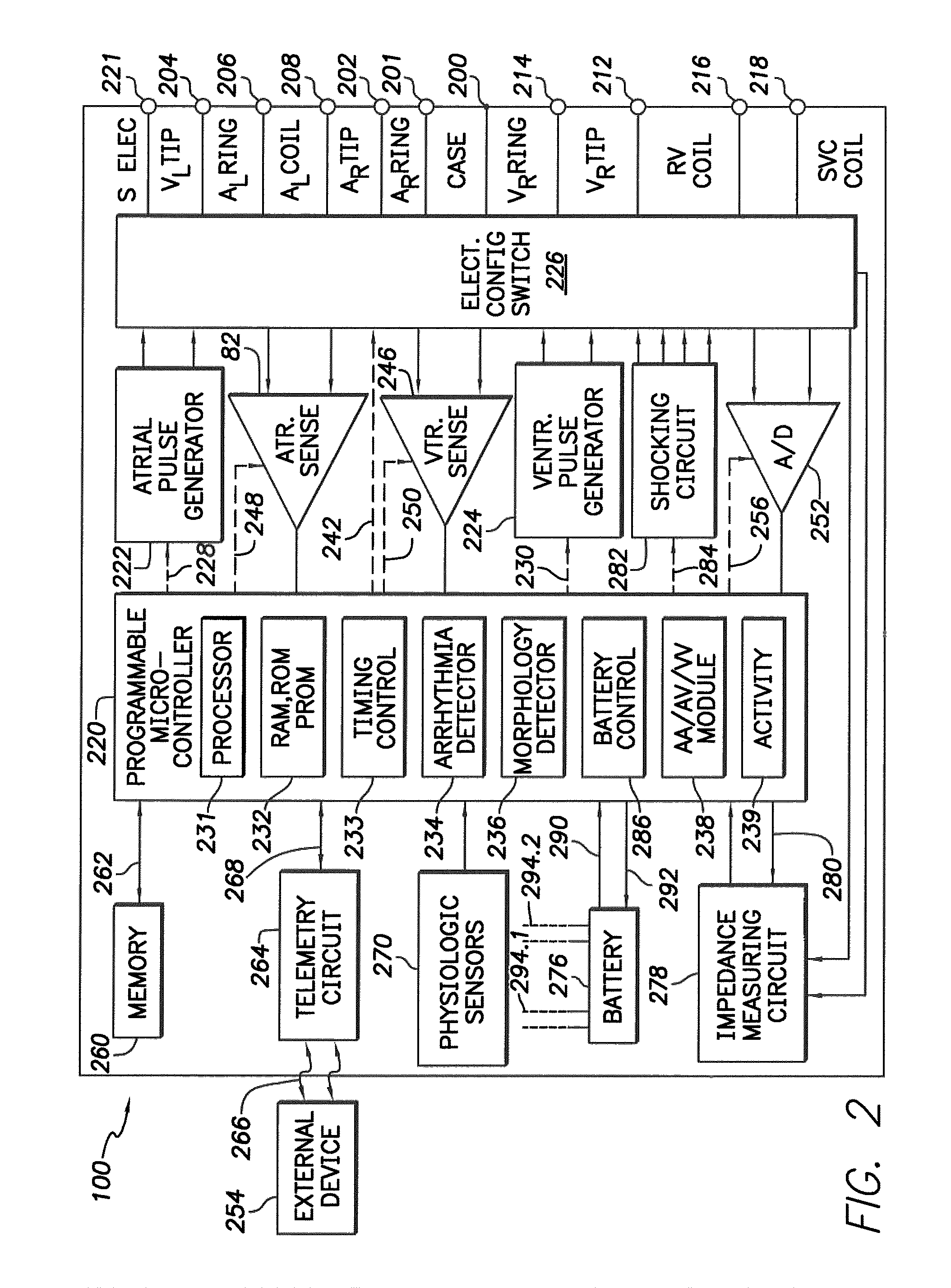Small caliber implantable biometric leads and cables for same
a biometric and small caliber technology, applied in electrotherapy, internal electrodes, therapy, etc., can solve the problems of decreasing the ability to carry large currents and increasing the dc resistance of the cable, so as to optimize mechanical and electrical performance, optimize mechanical and electrical properties, and reduce the diameter of the lead
- Summary
- Abstract
- Description
- Claims
- Application Information
AI Technical Summary
Benefits of technology
Problems solved by technology
Method used
Image
Examples
Embodiment Construction
Overview
[0055]The following detailed description of systems and methods for conductor cable designs of small caliber ICTD leads for an implantable cardiac therapy device refers to the accompanying drawings that illustrate exemplary embodiments consistent with these systems and methods. Other embodiments are possible, and modifications may be made to the embodiments within the spirit and scope of the methods and systems presented herein. Therefore, the following detailed description is not meant to limit the methods and systems described herein. Rather, the scope of these methods and systems is defined by the appended claims.
[0056]It would be apparent to one of skill in the art that the systems and methods for conductor cable designs of small caliber ICTD leads for an implantable cardiac therapy device, as described below, may be implemented in many different embodiments of hardware, materials, construction methods, and / or the entities illustrated in the figures. Any actual hardware,...
PUM
 Login to View More
Login to View More Abstract
Description
Claims
Application Information
 Login to View More
Login to View More - R&D
- Intellectual Property
- Life Sciences
- Materials
- Tech Scout
- Unparalleled Data Quality
- Higher Quality Content
- 60% Fewer Hallucinations
Browse by: Latest US Patents, China's latest patents, Technical Efficacy Thesaurus, Application Domain, Technology Topic, Popular Technical Reports.
© 2025 PatSnap. All rights reserved.Legal|Privacy policy|Modern Slavery Act Transparency Statement|Sitemap|About US| Contact US: help@patsnap.com



